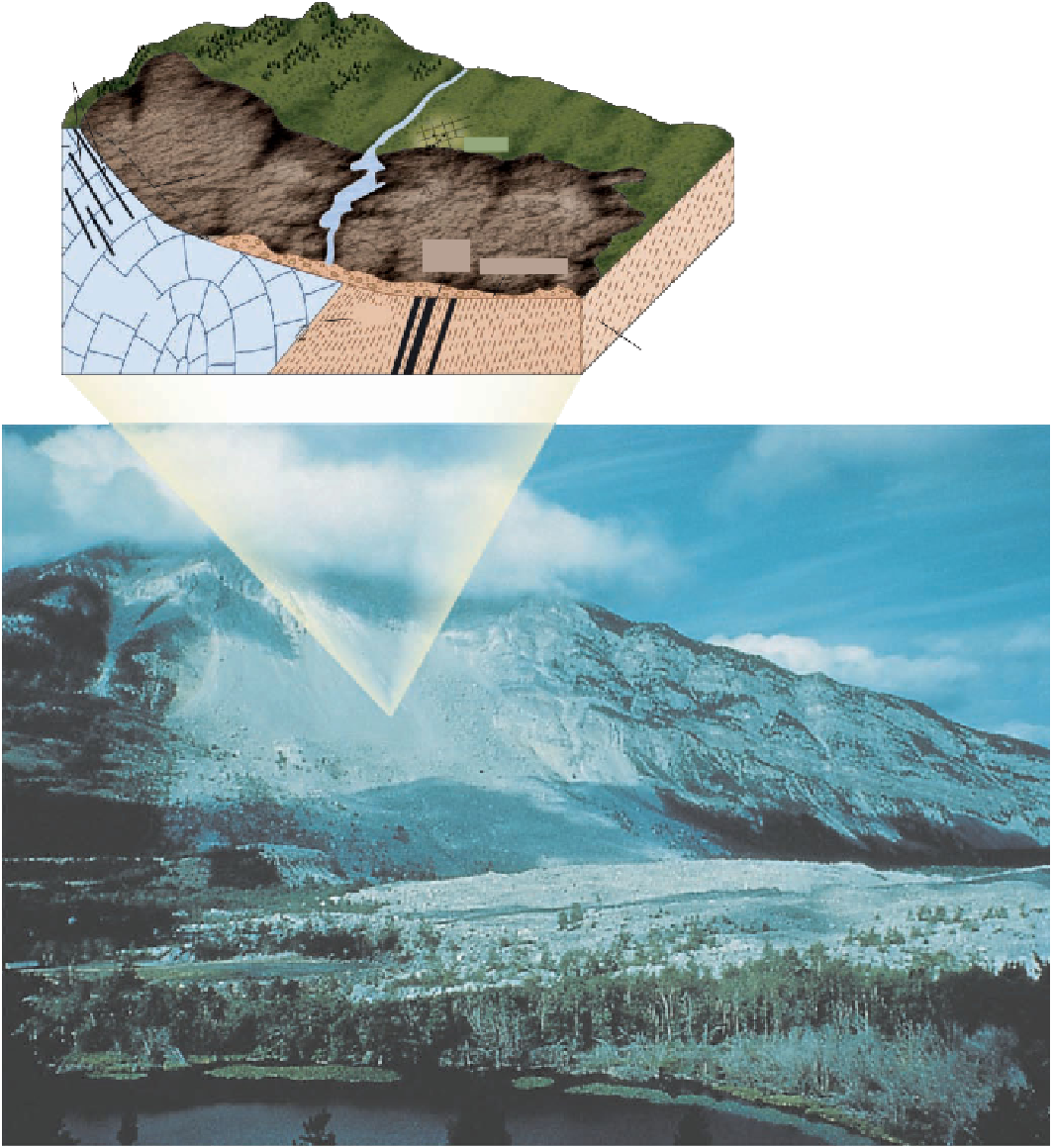Geology Reference
In-Depth Information
◗
Figure 11.13
Rock Slide, Turtle Mountain, Canada
The tragic Turtle Mountain
rock slide that killed 70 people
and partially buried the town
of Frank, Alberta, Canada, on
April 29, 1903, was caused by
a combination of factors. These
included joints that dipped in the
same direction as the slope of
Turtle Mountain, a fault partway
down the mountain, weak shale
and siltstone beds underlying the
base of the mountain, and mined-
out coal seams.
a
Joints
Frank
1800 m
Profile before
slide
Coal
seams
1500 m
Slide debris
Folded
limestones
Fault
Interbedded
shales and
siltstones
Results of the 1903 rock slide at Frank.
b
An excellent example of the damage that can be done
by quick clays occurred in the Turnagain Heights area of
Anchorage, Alaska, in 1964 (
considerable hydraulic pressure builds up behind the clay.
Some of this water has fl ushed out the saltwater in the clay
and has saturated the lenses of sand and silt associated with
the clay beds. When the magnitude-8.6 Good Friday earth-
quake struck on March 27, 1964, the shaking turned parts of
the Bootlegger Cove Clay into a quick clay and precipitated
a series of massive slides in the coastal bluffs that destroyed
◗
Figure 11.18). Underlying
most of the Anchorage area is the Bootlegger Cove Clay, a
massive clay unit of poor permeability. Because the Boot-
legger Cove Clay forms a barrier that prevents groundwater
from fl owing through the adjacent glacial deposits to the sea,




Search WWH ::

Custom Search